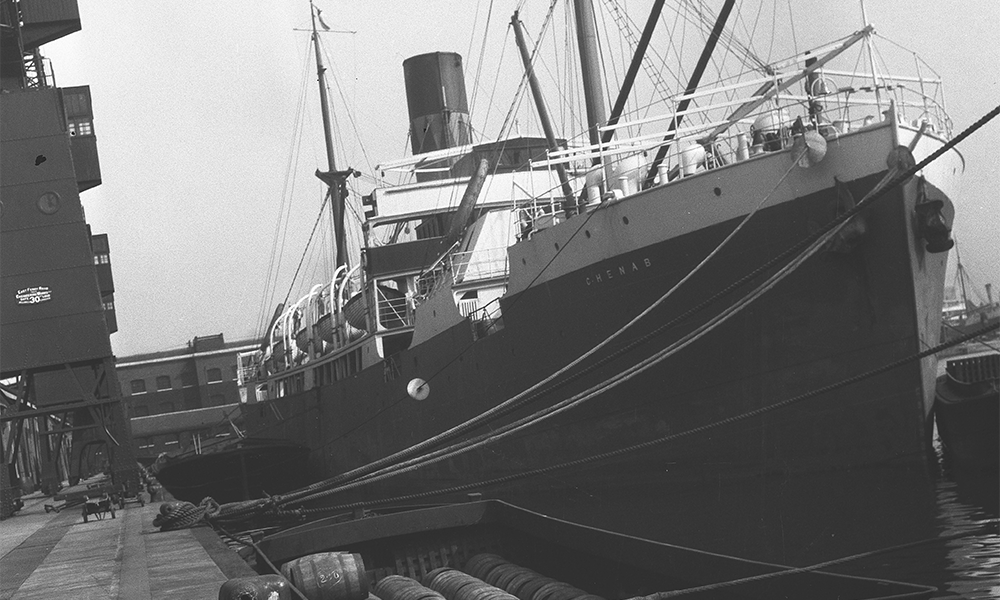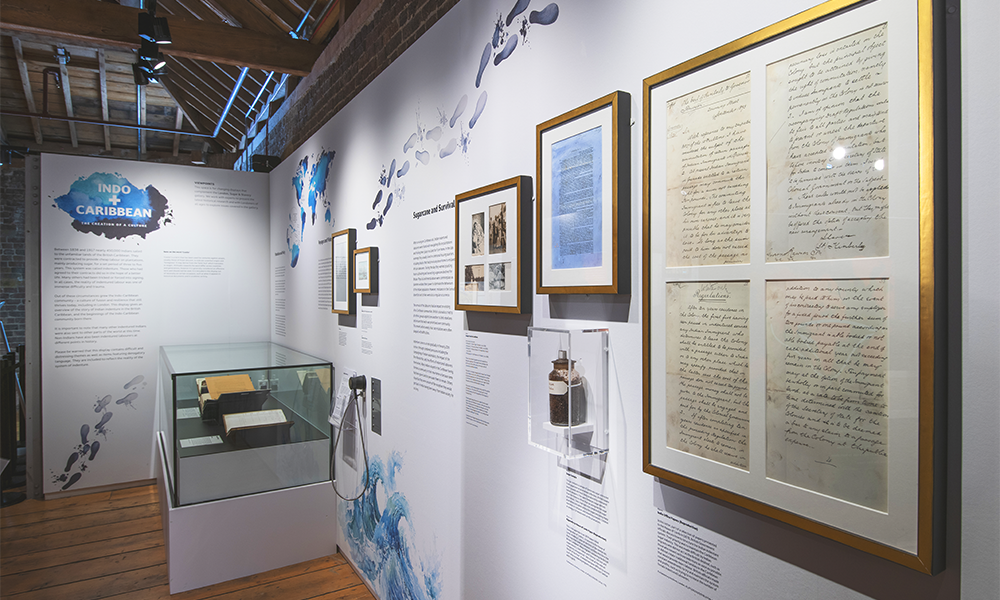Temporary exhibition at the Museum Of London Docklands offers insight into the practice

Subscribe to our Wharf Whispers newsletter here
Walk around West India Docks today and, despite a few preserved cranes, mooring points and the odd plaque, it’s relatively easy to forget that every honeyed brick in their construction has witnessed the passage of a history that profoundly affected the lives of people across the globe for the better part of two centuries.
In 2023, their waters are busy with BBQ and hot tub boats, families on little electric launches having picnics and open water swimmers with fluorescent tow floats.
The quays themselves have mostly been overtaken by the concrete overhangs of Canary Wharf.
It’s wonderful that these bustling, lively scenes exist, but it’s equally important to tell the stories of what came before, in some cases so we can acknowledge the horrors of the past and reflect on how we might ensure such things are avoided in future.
Fortunately we have the Museum Of London Docklands on West India Quay to do just that – its staff working hard to ensure its displays are relevant, engaging and unflinching as they work to unlock the past for visitors.
My way into its latest free, temporary exhibition – Indo + Caribbean: The Creation Of A Culture – for example, the image at the top of this page – taken in West India Docks when the SS Chenab paid London a visit in 1928.
It’s part of the museum’s collection and looks, at first glance, to be a fairly innocuous picture.

But this vessel was originally built for James Nourse Ltd in 1911 to transport indentured labourers from India to other British colonies after slavery was abolished.
“This image was taken a little after indenture ended, in 1917, but we also found the company’s log book with the details of all the journeys that its ships made and we have that on show, open on the page for the Chenab,” said Shereen Lafhaj, the exhibition’s curator.
“That’s really interesting because it gives an indication of how the journeys were viewed and how the indentured labourers were treated.
“It’s all numbers and there are references to half people, who would have been children.
“We make the point that this exhibition is to do with the British Caribbean, although the topic of indenture is a much wider story. India was sending indentured labourers all over the world.
“Before the 1833 Slavery Abolition Act, the work being done on plantations in the British Caribbean to produce things like sugar, rubber and cocoa was being done by enslaved Africans.
“After 1833, planters in the British Caribbean were asking where their cheap labour could come from and India was seen as the perfect solution.
“It was in the British Empire, there was already an Indian indenture system going on in Mauritius at the time, and so they used that as a template.
“Basically, labourers would commit to working for a set number of years – usually three to five on plantations.

“In return they would be promised accommodation, a basic wage and so on, but it’s very obvious that most of the indentured labourers did not know what they were signing up for.
“All that was required was a thumb print. We have an example of one of these contracts as part of the exhibition.
“It was back-breaking work, with children over 10 and women also participating on the plantations doing activities like spreading manure or cutting sugar cane – gruelling tasks.”
The display, which is free to visit and located on the museum’s top floor, offers an introduction to the topic of indenture, people’s experience of travelling to the Caribbean and what they found when they got there.
“Indenture was a very mixed picture and it’s a complex area but we do know most people did not understand what they were getting into,” said Shereen.
“In our audio section you have clips of stories of people getting on board or even trying to escape from the depots they were kept in before embarking.
“It was also a huge cultural shock because India had a caste system and that was completely ignored.
“This caused problems for people returning to India after their indenture as they became the victims of negative stereotypes.”
There’s also a section on Indo Caribbean Londoners, recording the experiences of those who came to the UK on ships such as the Empire Windrush, but slipped through the net of recognition, with no category on the census to record their presence.
“We have three wonderful partners who are Londoners and they’ve recorded a great song for us where they talk about identity, London and their families,” said Shereen.
“We thought it was really important to tell some of these stories too.”
Find out more about the exhibition, which runs until November 19, 2023, here.
Read More: How Jon Hala in Canary Wharf became a family business
Read Wharf Life’s e-edition here
Subscribe to our Wharf Whispers newsletter here
- Jon Massey is co-founder and editorial director of Wharf Life and writes about a wide range of subjects in Canary Wharf, Docklands and east London - contact via jon.massey@wharf-life.com



